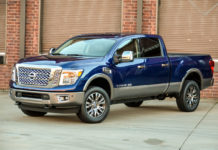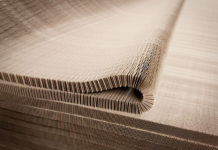In the sportbike world, there're two kinds of success: victory at the track; and a sensation on the showroom floor. Ever since Yamaha's YZF-R1 burst onto the scene in 1998, it's been in winner in both categories, becoming what is perhaps the most desirable literbike among Japanese manufacturers.
For 2007, the R1 brings its traditional strong arsenal – awesome performance and stunning good looks – and receives a technology infusion and sharper styling to remain at the top of the literbike pack. We've sat on it, and so we're confident in saying that R1 fans are going to have wet dreams about this latest and greatest.
The first item to note is that Yamaha has dropped its signature five-valve-per-cylinder design in favor of a typical four-valve layout. Yamaha tells us the five-valve arrangement limited the combustion chamber shape in this current world of more compact setups, and it must be true if the tuning-fork company has shelved its unique 5-valve technology first seen in the 1984 FZ750. Instead of five 23.5mm intake valves, the new R1 uses four 31mm poppets (largest in class), and are now made of lightweight titanium. Its pair of 25mm steel exhaust valves is similar in size to last year. The more compact combustion chamber has bumped the compression ratio from 12.4 to 12.7:1.
Below the cylinder head lies a bottom end not significantly changed. It uses the same bore and stroke (77.0 x 53.6mm), already the most oversquare in the class, so the redline remains at 13,750 rpm, still the highest among four-cylinder literbikes. New con rods are beefier at the big end for greater durability.
It's at the intake side where the R1 gets tricky. “The One” now receives the YCC-T fly-by-wire throttle control first seen last year on the little brother R6. However, the R1's system now reads changes in parameters at a faster rate of 1000 times a second.
But that's not even the big news. This new R1 brings a performance feature heretofore unseen on a production motorcycle. It's Yamaha Chip Controlled Intake (YCC-I), Yamaha-speak for variable-length intake trumpets. At lower revs, the intake snorkels are set at a height of 140mm for strong torque production. Once the motor is at higher rpm, the trumpets drop down to a height of 65mm for maximum power when screaming for vengeance (a reference for Judas Priest fans…).
The result, says Yamaha, is an increase of low, mid and top-end power over last year's high-strung motor. Its claimed 178 horsepower (without ram-air effect) is a boost of five ponies at its 12,500-rpm peak. Expect to see nearly 155 horsies at the rear wheel when we run it on the dyno. More importantly, its powerband should be much more robust than the peaky 2004-06 bikes.
The new exhaust system, still with dual underseat canisters, is built largely from titanium and features dual catalyzers and an EXUP valve to meet Euro 3 and 2008 EPA emissions standards. The slipper clutch from last year's high-dollar LE model is now standard. Surprisingly, there are no plans to produce an Ohlins-equipped LE for 2007, making last year's limited-production bike even more collectible. The addition of the slipper clutch and catalyzers is expected to add a couple of pounds to the new bike, likely making it the heaviest literbike of the superbike group.
The new R1's frame looks similar to the previous model but has different flex characteristics. The cast parts are now more rigid, but the extruded bits have a certain degree of flex built into them for greater feel and feedback when leaned over in corners. Reinforcing ribs have been added to the steering head area while a cross-member between the frame rails has been eliminated. Chassis geometry has remained mostly constant, utilizing the same 24-degree rake and 55.7-inch wheelbase as before. Trail is up slightly from 97mm to 102mm.
A new swingarm has its torsional rigidity increased by 30% while lateral rigidity is decreased marginally, plus its pivot position has been raised by 3mm. Yamaha says this has resulted in better turn-in response and more grip under acceleration, something the World Superbike race teams have struggled with in past years. There's now more room for larger-diameter race tires that, depending on brands, could sometimes not have enough clearance with the previous model.
Guiding the R1's sleek nose is a new 43mm fork that has larger-diameter pistons (20mm to 24mm) and new aluminum rods. Yamaha says the new design reduces cavitation and offers improved damping. The inner tube wall thickness has been reduced for a small weight saving, while the axle bracket has been beefed up. A new rear shock with separate high- and low-speed compression damping has a progressive rate that is said to be plush over small bumps but stiff enough over big whoops.
Yamaha has upped the ante in the braking department by going to a pair of six-piston calipers up front. These smaller pistons allow a greater portion of the outer brake rotor to be used, so the disc's diameter has been reduced by 10mm to 310mm, which may result in slightly quicker turning response.
Wheels are unchanged this year, though the buns they wear have. Longtime supplier Dunlop is replaced by Pirelli's Diablo Corsa rubber, though only on the R1.
Styling-wise, Yamaha seems to have been hesitant to draw a clean-sheet design and instead offers a mix of old R1 combined with some of the wonderful style of the popular R6 in the side fairing and fuel tank. Yamaha says the R1 now has improved aerodynamics and better intake flow, and the layered cowling creates a vacuum to draw hot air away from the engine. Instrumentation is also new, with a prominent tach displaying giant numbers for quick assimilation of information.
The new R1 should be hitting dealers around the first of December in your choice of Team Yamaha Blue, Charcoal Silver/Matte Black or Candy Red/Matte Black. Yamaha expects to have accessories such as frame sliders, exhausts, seat cowls and carbon fiber pieces available by the time the bike arrives in showrooms at a base price of $11,599. The silver or red version will cost an extra $100.
Although the new R1 might not be as radical as some expected, a member of Yamaha's development team assured me the new bike is much quicker and easier to ride than the previous version. “This is a big leap forward,” he confided.








